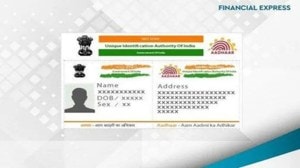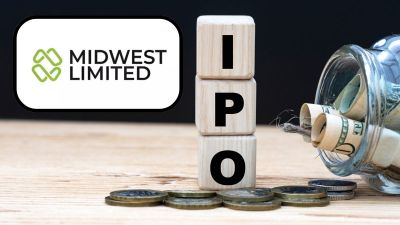The World Health Organization (WHO) recently said that countries are off-track to achieve the global target of reducing sodium intake by 30% by 2025. According to the report— a first of its kind on sodium intake reduction—only 5% of WHO member states are protected by mandatory and comprehensive sodium reduction policies while 73% lack full range of implementation of such policies.
Implementing highly cost-effective sodium reduction policies could save an estimated 7 million lives globally by 2030, the report notes. “It is an important component of action to achieve the Sustainable Development Goal target of reducing deaths from noncommunicable diseases. But today, only nine countries (Brazil, Chile, Czech Republic, Lithuania, Malaysia, Mexico, Saudi Arabia, Spain, and Uruguay) have a comprehensive package of recommended policies to reduce sodium intake,” it adds.
Also read: Is sunscreen required for Indian skin tone? Here’s what experts say
Sodium, an essential nutrient, increases the risk of heart disease, stroke and premature death when eaten in excess. The main source of sodium is table salt (sodium chloride), but it is also contained in other condiments such as sodium glutamate.
Modern-day opium
We all know, and many studies have also talked about the harmful effects of salt, and yet we continue to consume it in large amounts. So, what exactly is going wrong?
“India is a unique country where different regions and states have different lifestyles, diet, and food habits. However, over the past several decades, the average Indian diet has gone through a transformation. An average Indian today is eating a lot less of green vegetables, pulses, dairy products, and fruits. On the other hand, the consumption of processed and fast food has gone up. Thus, the amount of salts and sugars has increased in our diet which is increasing the likelihood of high blood pressure, obesity, and heart diseases,” says Dr Sanjay Gupta, senior consultant, internal medicine, Paras Hospitals, Gurugram.
It’s a matter of old habits and being slave to addiction to taste, says Dr Sunil Prakash, senior director and HOD, nephrology and renal transplantation, BLK-Max Super Speciality Hospital, New Delhi. “Sodium is modern-day opium. So, addiction is just like that for any intoxicant,” he adds.
As per Ruchika Jain, chief clinical nutritionist at Fortis Hospital, Vasant Kunj, a complete Indian cuisine/thali contains salt in multiple forms—dal, vegetables, along with accompaniments like pickles, papad, chutney, etc, which are hidden sources of salt. “Also, the food that we eat as munchies—processed food or bakery items—contains salt in various forms. While a person must not eat more than 5 gm of salt in a day, we tend to eat more unknowingly, which goes unnoticed in our daily diet. This slow and steady intake of salt increases sodium levels in our body leading to various ailments,” she adds.
“Worse yet, the fast delivery services of food ordered online has further led to an increase in the consumption of fast foods which are processed, boxed, and packaged. Every processed, boxed, and packaged food item is rich in salts (sodium),” says Dr Sharad Yadav, consultant physician, Ruby Hall Clinic, Pune.
The WHO recommends that adults consume less than 5 gm (just under a teaspoon) of salt per day. This recommended maximum intake of salt for adults must be adjusted downward for children aged 2 to 15 years based on their energy requirements relative to those of adults. This recommendation for children does not address the period of exclusive breastfeeding (0–6 months) or the period of complementary feeding with continued breastfeeding (6–24 months).
According to Suparna Mukherjee, in-charge, department of clinical nutrition, Narayana Health City, Bangalore, if we are preparing our basic vegetables, pulses, and the rest of the cooked food with the minimum quantity of salt, we are already using one teaspoon of 5 to 6 gram of salt. “So, the conclusion is that 5 to 6 gm salt is already part of our daily food. So, whatever extra salty food we are taking is giving extra salt to our daily diet. That can be 1/4 teaspoon of pickle, a papad or even a biscuit or any bakery item as well,” she adds.
Test your taste
However, there are several measures that we can adopt in order to reduce our sodium intake. “Foods that we can eat to reduce our sodium intake are unprocessed foods and most dairy products; fresh vegetables and fruits like apples, bananas or oranges; brown rice and whole-grain breads; and fresh or frozen seafoods and meats that are unprocessed,” says Dr Yadav of Ruby Hall Clinic, adding: “Foods that should be avoided are alcohol, processed and packaged foods; sugary drinks; red meat; pizzas and pastas; saturated fats; and caffeine.”
Cut back on fast food, reduce or limit the amount of salt used to prepare food and take table salt and salty sauces off your table, offers Dr Gupta of Paras Hospitals. “While buying packaged foods, choose the ‘no salt added’ option when available. One can also include food rich in potassium like bananas, beans, legumes, potatoes and spinach in one’s diet,” he adds.
“A little bit of fresh squeeze of lemon juice or freshly hand-pounded roasted herbs or spices (such as roasted jeera powder) can help counteract the salty flavour of a dish and balance the flavours. Instead of daily morning biscuits (which are high in sodium), nuts or seeds can be a good pair with tea or coffee,” adds Mukherjee of Narayana Health City.
“First of all, everyone must know what their sodium intake should be. As you age, the sodium intake must reduce irrespective of your gender or health condition. Awareness is key—learn how to read nutrition food labels of the packaged item. Remove bottles of table salt, chaat masala and black salt from your dining table. Eat fresh and home cooked food,” offers Jain of Fortis Hospital, Vasant Kunj.
The potassium connect
At the same time, doctors also talk about the importance of potassium consumption and its relationship with sodium. “Sodium and potassium are electrolytes that maintain fluid and blood volume. While sodium helps to keep the body’s fluids in balance, potassium aids nerve transmission and muscle contractions. Having the right balance of these and other electrolytes helps the body to function normally,” explains Dr Gupta of Paras Hospitals.
Sodium and potassium have an inverse relationship—as potassium level decreases, sodium levels go up and vice versa. “Blood pressure increases when there is too much sodium and too little potassium. Potassium can decrease blood pressure by relaxing the blood vessel walls, thus helping to prevent stroke and heart diseases,” he adds.
The more potassium you consume, the more sodium you lose, says Jain of Fortis Hospital. “So, a potassium-rich diet is necessary to reduce the sodium intake. Eat lots of lentils, beans, spinach, broccoli, bananas and dried fruits (raisins, apricots),” she adds.
Studies have shown that reducing sodium in diet and substituting it with potassium cause a reduction in high blood pressure. This has led to increased usage of low sodium salts like TATA Lite, black salt, rock and senda namak, among others. “In moderation it is good. However, patients with kidney diseases and diabetics who are taking blood pressure reducing medicines and diuretics should be careful. They should periodically test their sodium and potassium levels. Potassium levels may build up in blood surreptitiously without any symptoms and may cause fatal cardiac arrest. Hence caution is advisable,” adds Dr Prakash of BLK-Max Super Speciality Hospital.
Also read: Meditation reduces stress and anxiety in patients with heart disease
Misperceptions about salt reduction
* On a hot and humid day when you sweat, you need more salt in the diet: There is little salt lost through sweat. So, there is no need for extra salt even on a hot and humid day, although it is important to drink a lot of water
* Salt added during cooking is not the main source of salt intake: In many countries, about 80% of salt in the diet comes from processed foods
* Only old people need to worry about how much salt they eat: Eating too much salt can raise blood pressure at any age
* Sea salt is not ‘better’ than manufactured salt simply because it is ‘natural’: Regardless of the source of salt, it is the sodium in salt that causes bad health outcomes
* Food does not need salt to have appealing flavour: It takes some time for a person’s taste buds to adjust, but once they get used to less salt, one is more likely to enjoy food and notice a broader range of flavours
* Food has no flavour without salt: While this may be true at first, taste buds soon become accustomed to less salt and you are more likely to enjoy food with less salt, and more flavour
* Foods high in salt taste salty: Some foods that are high in salt don’t taste very salty because sometimes they are mixed with other things like sugars that mask the taste. It is important to read food labels to find out sodium levels
* Reducing salt could be bad for my health: It’s very difficult to eat too little salt since there are so many everyday foods containing salt
(Source: World Health Organization)









